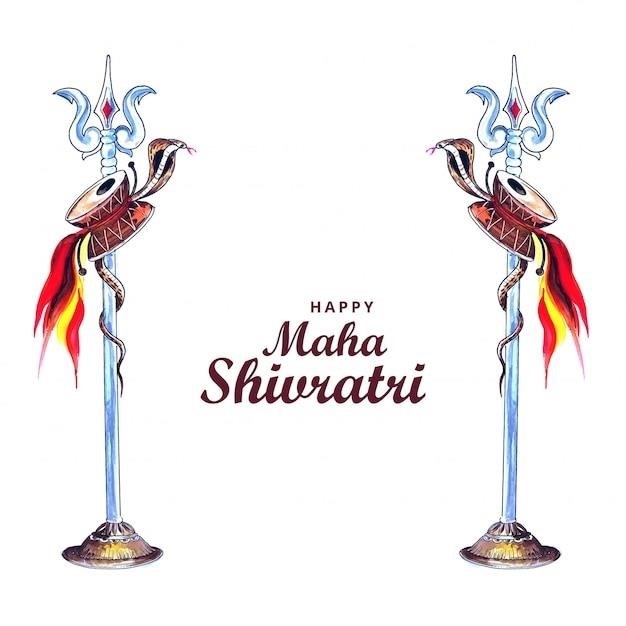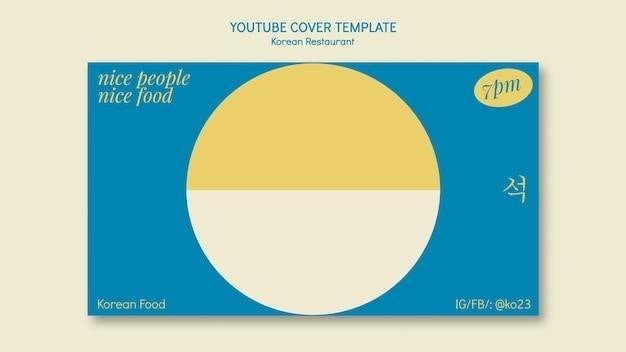The Ethics of Ambiguity⁚ A Comprehensive Overview
This exploration delves into Simone de Beauvoir’s seminal work, “The Ethics of Ambiguity,” examining its core tenets and enduring relevance․ The PDF readily available online offers a concise overview of existentialist ethics, challenging traditional moral frameworks․ De Beauvoir’s insightful analysis of freedom, responsibility, and the inherent contradictions of human existence continues to resonate with contemporary readers and scholars alike․ Discussions regarding the ethical implications of ambiguity in various contexts, including education and healthcare, are explored․
Simone de Beauvoir’s Existentialist Ethics
Simone de Beauvoir’s existentialist ethics, as detailed in her influential “Ethics of Ambiguity” (available in readily accessible PDF versions), presents a radical departure from traditional moral frameworks․ Rejecting the notion of pre-ordained moral principles, Beauvoir emphasizes the individual’s absolute freedom and the inherent responsibility that accompanies it․ Her philosophy centers on the concept of existence preceding essence, meaning that individuals are not defined by predetermined roles or natures but rather create their own identities through their choices and actions․ This radical freedom, however, is not without its challenges․ Beauvoir acknowledges the inherent ambiguity of human existence, the constant tension between individual aspirations and the limitations imposed by the world and others․ Her ethics, therefore, are not a set of rigid rules but rather a framework for navigating the complexities of human life․ It encourages a commitment to authenticity, urging individuals to embrace their freedom and responsibility, even amidst uncertainty and contradiction․ This approach necessitates a constant reevaluation of values and a willingness to engage with the world in a meaningful and committed way․ The ethical task, for Beauvoir, is to strive for authenticity and genuine engagement, recognizing the inherent ambiguity of the human condition․
Key Concepts in “The Ethics of Ambiguity”
Central to Simone de Beauvoir’s “Ethics of Ambiguity,” readily available as a PDF, is the concept of “ambiguity” itself․ This isn’t presented as a negative, but rather as the defining characteristic of the human condition․ We are both free and constrained, individual and social, transcendent and immersed in the world․ This inherent tension is not a problem to be solved but a condition to be embraced․ Another key concept is “freedom,” understood not as license but as the fundamental responsibility to create meaning and value in a meaningless universe․ Beauvoir rejects both the “serious” and “seriousness” which she believes to be self-deceptive attempts to escape this ambiguity․ “Seriousness” involves clinging to rigid values or beliefs to avoid facing the uncertainties of existence․ The “serious” individual attempts to impose their own subjective values onto the world․ Instead, Beauvoir advocates for a commitment to “authenticity,” which involves accepting the ambiguity of existence, making responsible choices, and engaging with the world in a genuine and committed way․ These choices, she emphasizes, are not made in isolation but within a complex web of intersubjective relationships․ The constant tension between individual freedom and the social realm are fundamental to her work, alongside the concepts of responsibility and the ethical imperative of creating meaning in a world without inherent meaning․
Part I⁚ Ambiguity and Freedom
In the first part of “The Ethics of Ambiguity,” readily accessible in PDF format, Simone de Beauvoir tackles the fundamental tension between human freedom and the inherent ambiguity of existence․ She argues against the notion of a pre-ordained human nature or essence, emphasizing instead the radical freedom of individuals to define themselves through their choices and actions․ This freedom, however, is not absolute; it’s intertwined with the constraints of our social and material conditions․ De Beauvoir rejects both the “serious” and “seriousness” that she believes to be self-deceptive attempts to escape the inherent ambiguity of life․ The “serious” person, she notes, tries to impose their subjective values on the world to avoid facing life’s uncertainties․ She contrasts this with the authentic individual, who accepts this ambiguity and makes responsible choices within the context of their own freedom․ This initial section lays the groundwork for her existentialist ethics, illustrating how freedom isn’t merely the absence of constraint, but the capacity to engage responsibly with the world’s complexities and uncertainties․ She highlights the importance of confronting the inherent contradictions of human existence, rather than seeking refuge in simplistic or predetermined moral frameworks․
Part II⁚ Personal Freedom and Others
De Beauvoir’s “Ethics of Ambiguity,” easily found as a PDF, significantly expands on the interplay between individual freedom and our relationships with others in its second part․ She directly addresses the challenge of reconciling personal autonomy with the inherent interconnectedness of human existence․ The pursuit of individual freedom, de Beauvoir argues, shouldn’t come at the expense of others․ Instead, she proposes a nuanced approach where individual freedom is not only recognized but also understood as inherently relational․ Authentic freedom, in her view, involves acknowledging and engaging responsibly with our impact on others․ This section explores the complexities of intersubjectivity, highlighting how our actions and choices affect the lives and freedoms of those around us․ She rejects both the extremes of solipsism (complete self-absorption) and self-sacrifice, advocating for a reciprocal relationship where individuals recognize their freedom while also respecting the freedom and agency of others․ The ethical responsibility, therefore, lies not in avoiding conflict or ambiguity, but in navigating these complexities with mindful consideration for our fellow human beings․ This ethical engagement doesn’t simplify human interaction but instead enriches our understanding of freedom within a shared human reality․
Part III⁚ The Antinomies of Action
In the third part of her “Ethics of Ambiguity,” readily accessible in PDF format, Simone de Beauvoir confronts the inherent contradictions within human action․ She masterfully dissects the seemingly paradoxical nature of ethical decision-making, where individuals are simultaneously driven by opposing forces․ De Beauvoir highlights the tension between our desire for authenticity and the need for social engagement, between our longing for transcendence and the constraints of our embodied existence․ This section delves into the “antinomies,” or inherent contradictions, that shape our ethical choices․ She argues that these contradictions are not flaws to be overcome but rather fundamental aspects of the human condition․ Embracing these antinomies, rather than seeking to eliminate them, becomes crucial for ethical action․ De Beauvoir suggests that true ethical engagement involves navigating these contradictions responsibly, acknowledging the complexities and ambiguities inherent in every choice․ This requires a constant process of self-reflection, a willingness to grapple with conflicting values, and an ongoing commitment to authenticity even amidst inherent limitations and opposing forces․ The ethical individual, for de Beauvoir, is not one who avoids contradictions, but one who confronts them head-on․
Criticisms and Interpretations of de Beauvoir’s Work
Simone de Beauvoir’s “Ethics of Ambiguity,” easily accessible in PDF format, has been subject to diverse interpretations and criticisms since its publication․ Some critics argue that her emphasis on individual freedom overlooks the importance of social structures and power dynamics in shaping ethical choices․ The perceived lack of concrete guidelines for navigating ethical dilemmas has also drawn criticism; some find her approach too relativistic, lacking a robust framework for resolving conflicts between competing values․ Others argue that de Beauvoir’s existentialist framework is overly pessimistic, neglecting the potential for human goodness and collaboration․ However, many scholars praise her focus on the complexities of ethical decision-making, appreciating her acknowledgment of the inherent contradictions within human experience․ Her emphasis on personal responsibility and the importance of authenticity has profoundly influenced contemporary ethics․ Furthermore, the ongoing relevance of her work stems from its adaptability to various contexts, offering a framework for navigating the ambiguity inherent in all human endeavors․ The enduring debate surrounding her ideas reflects the complexity and richness of her philosophical contributions․
The Ethics of Ambiguity and Contemporary Issues
De Beauvoir’s “Ethics of Ambiguity,” readily available as a PDF, retains striking relevance to contemporary ethical debates․ The pervasive uncertainty of the modern world, marked by rapid technological advancements and globalization, mirrors the ambiguous situations she analyzed․ Her emphasis on individual responsibility within a complex, interconnected world resonates deeply with contemporary concerns about climate change, social justice, and technological ethics․ The challenges of navigating conflicting values in a globalized society—balancing individual freedom with collective responsibility—echo her exploration of the tensions between personal aspirations and societal demands․ Furthermore, the rise of artificial intelligence and its ethical implications directly engage with de Beauvoir’s core arguments about freedom and the limits of human agency․ Her work provides a powerful framework for grappling with these emerging challenges, prompting critical reflection on the nature of human existence and the responsibilities that accompany it․ The PDF’s accessibility ensures continued engagement with these crucial contemporary issues․
Applications in Education and Healthcare
The concepts presented in Simone de Beauvoir’s “Ethics of Ambiguity,” easily accessible in PDF format, offer valuable insights into ethical decision-making within education and healthcare․ In education, acknowledging the inherent ambiguities in pedagogical approaches fosters critical thinking and encourages students to grapple with complex issues lacking straightforward solutions․ De Beauvoir’s emphasis on personal responsibility aligns with fostering student autonomy and ethical reasoning․ Similarly, in healthcare, the “Ethics of Ambiguity” provides a framework for navigating the complexities of patient care, where ethical dilemmas often involve conflicting values and uncertain outcomes․ The PDF’s exploration of the “antinomies of action” highlights the challenges inherent in balancing competing obligations, such as respecting patient autonomy while also acting in their best interests․ The emphasis on embracing ambiguity encourages healthcare professionals to engage in thoughtful reflection and open dialogue, leading to more ethically sound decision-making processes․ By understanding and accepting the inherent uncertainties within these fields, professionals can better address the moral complexities they encounter daily․
The Role of Ambiguity in Ethical Decision-Making
Simone de Beauvoir’s “Ethics of Ambiguity,” readily available as a PDF, profoundly impacts our understanding of ethical decision-making․ The text challenges the notion that clear-cut ethical solutions always exist, highlighting the frequent presence of ambiguity in real-world moral dilemmas․ De Beauvoir’s work encourages a move away from simplistic, rule-based ethical systems towards a more nuanced approach that acknowledges the complexities of human experience and the inherent contradictions within ethical choices․ The PDF illustrates how embracing ambiguity allows for a more responsible and thoughtful consideration of the consequences of actions, urging individuals to confront the uncertainties and complexities inherent in decision-making․ Rather than seeking definitive answers, de Beauvoir’s philosophy emphasizes the importance of engaging with the ambiguities themselves, recognizing that ethical choices often involve navigating conflicting values and unforeseen outcomes․ This approach fosters a deeper understanding of the ethical dimensions of a situation, leading to more considered and ethically sound decisions․ The text’s emphasis on personal responsibility underscores the crucial role of individual judgment in navigating these complex moral landscapes․
Embracing the Ambiguity of Life
In conclusion, Simone de Beauvoir’s “Ethics of Ambiguity,” easily accessible in PDF format, offers a compelling framework for navigating the inherent uncertainties of human existence․ The readily available text challenges the pursuit of absolute certainty, advocating instead for an embrace of ambiguity as a fundamental aspect of the human condition․ De Beauvoir’s work, far from promoting moral relativism, emphasizes the crucial role of individual responsibility in making ethical choices within a world characterized by inherent contradictions․ The PDF underscores the importance of acknowledging the complexities of life, recognizing that clear-cut solutions are often elusive․ By embracing ambiguity, we are better equipped to confront the challenges and complexities of moral decision-making, fostering a more nuanced and responsible approach to ethical dilemmas․ The text’s enduring legacy lies in its ability to empower individuals to engage thoughtfully with the ambiguities of life, making ethical choices that reflect the multifaceted nature of human experience․ Ultimately, de Beauvoir’s philosophy encourages us to accept the inherent uncertainties of life, fostering a sense of responsibility and agency in the face of moral complexity․

















